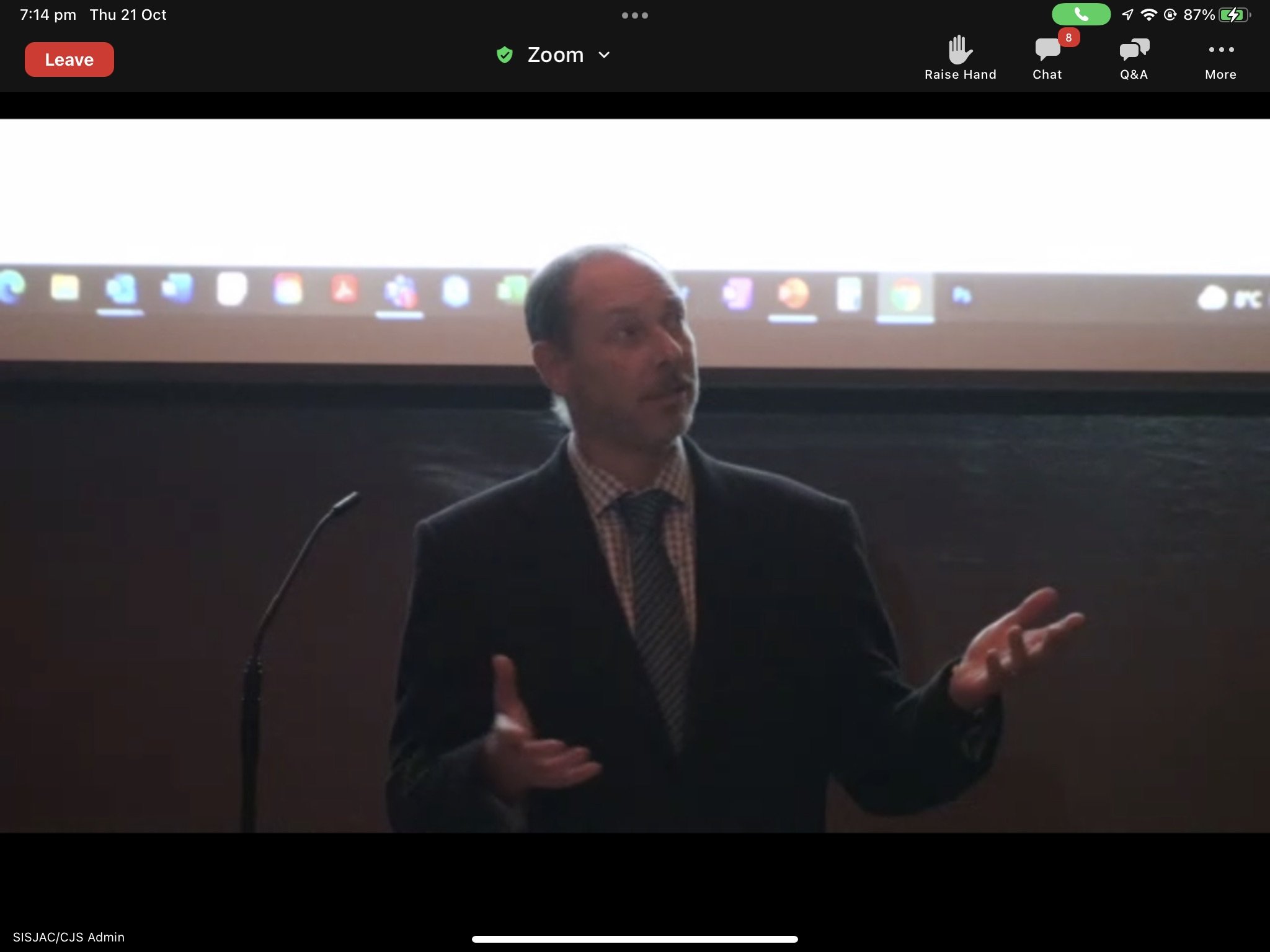Third Thursday Lecture: ‘The Bridge to Heaven: Comparing UK-Japan heritage’ — Dr. Andy Hutchinson (2021年 10月 21日)
After a few technical issues and illness from the speaker, Dr. Eiko Honda, Dr. Andy Hutchinson stepped in to relate his first visit to Japan. Dr. Hutchinson was invited to Kyoto prefecture to visit Amanohashidate, the Bridge to Heaven, in January 2019.
Amanohashidate (「天橋立」) is one of the three Scenic Wonders of Japan and located in Miyazu Bay. It is a natural strip of land connecting the side of the bay. He explains he was there to attend a conference and there was an interesting connection between Amanohashidate and Mont-Saint Michel in France, a natural island which has been used as a monastery for over a millennium.
Beginning in Miyazu City, Dr. Hutchinson took the audience, both those present at the event and those, like myself, joining via Zoom, along with him as he explored the region and visited some of Japan’s cultural treasures, as well as several jinja, temples and other sites like gardens.
He went on to explain the importance of Amanohashidate within uta awase poetry in 966C.E. and how it became a motif within Japanese art and written works, using such examples as Sesshū Tōyō (1420-1506C.E.), silk screen painting and wood-block prints.
Dr. Hutchinson also explained his career history, his research areas as an archeologist, as well as highlighting a recent paper he wrote and his interest in cultural heritage (he has been a regular attendee at our Tuesday morning seminars with Dr. Simon Kaner, our tutor for that module). He ended his discussion with an overview of UNESCO world heritage and usefulness of designation, particularly in Japan and also in the UK.
This particular talk was nicely timed given our discussion of heritage within the last two seminars, especially given Liverpool’s removal as a UNESCO site and the issue of the A303 threatening Stonehenge’s status. Climate change was also an issue as this threatens many of the world’s natural wonders, especially given how UNESCO status ensures cashflow for preserving these important sites into the next century.
The event concluded with questions and an answers. Dr. Kaner began by asked Dr. Hutchinson how receptive Japan was of protecting the sites, especially given the international perspective. Japan appears to see UNESCO as almost a competition between prefectures where as the UK and US are are lot less enthusiastic when it comes to seeking heritage status. We also have fewer potential sites, given the sheer number found in Japan.
Other questions focused on UNESCO site tourism, comparing one million visitors at Stonehenge to fifteen million for some of Japan’s most popular spots. Other questions continued this theme, with the importance of gaining recognition for both touristic but also economic reasons, with no one resisting the idea instead showing enthusiasm.
However the process is particularly long and arduous so it is not an easy thing to do. Simon then pointed out Kamakura, a popular scenic day trip due to its historic status and closeness to Tokyo, have been inconsideration for thirty years. According to Dr. Kaner, the easy part of getting a location onto the list but the process then has the potential to drag into decades.
The event concluded with a reception and the announcement of the Robert Sainsbury Lecture, a collaboration between SISJAC, the UEA and the Sainsbury Centre, which will be held on 18th November. The lecture — ‘The Presence of Absence’ — will see Rebecca Salter speaking about the influences Japan has had on her career. Beginning at 6:30pm, the event will be held on the UEA campus with a reception at the Sainsbury Centre afterwards.




